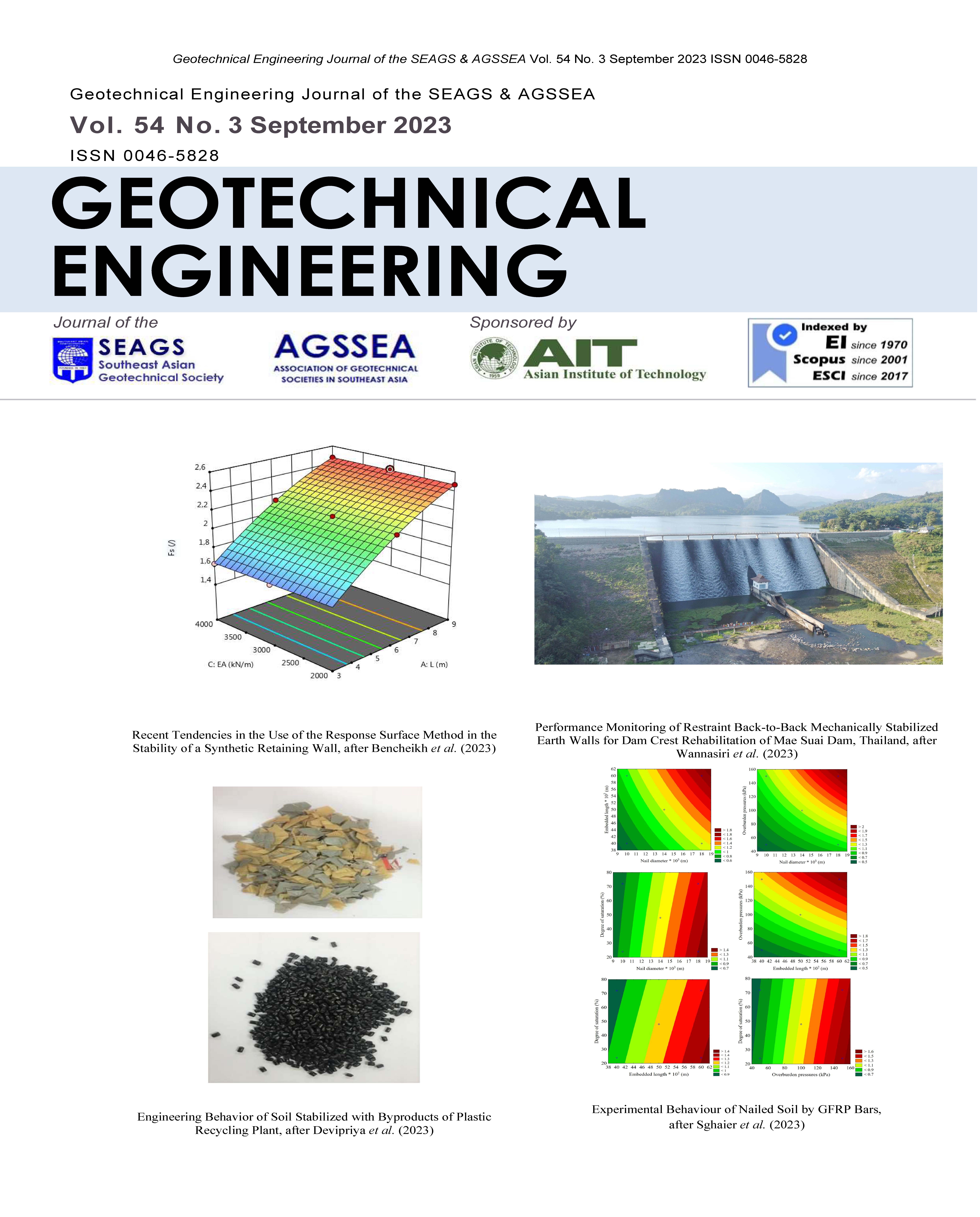Experimental behavior of nailed soil by GFRP bars
Main Article Content
Abstract
Replacing steel reinforcements with Glass Fiber Reinforced Polymer (GFRP) inclusions has emerged as one of the most
promising solutions to overcome corrosion problems and improve durability of soil nails used to stabilize slopes and retain excavations. The present study provides an insight regarding the pullout behavior of a GFRP nail observed in laboratory from a pullout test. As a parametric study included the influence of nail dimensions, overburden pressure, and degree of saturation of the soil on the soil nail’s pullout load. Using an experimental design methodology based on full factorial design, the study revealed that the influence of nail dimensions and overburden pressure on the pullout load are more significant than of the degree of saturation of the soil. Moreover, the experimental results show that the pullout behavior of GFRP reinforcement is different, compared to ribbed steel reinforcement, under the same testing condition. The differences between the Young’s modulus, the interface properties, and the surface roughness of the bar revealed the main influence factors.
Article Details

This work is licensed under a Creative Commons Attribution-NonCommercial-NoDerivatives 4.0 International License.
Copyright © 2019 Association of Geotechnical Societies in Southeast Asia (AGSSEA) - Southeast Asian Geotechnical Society (SEAGS).


